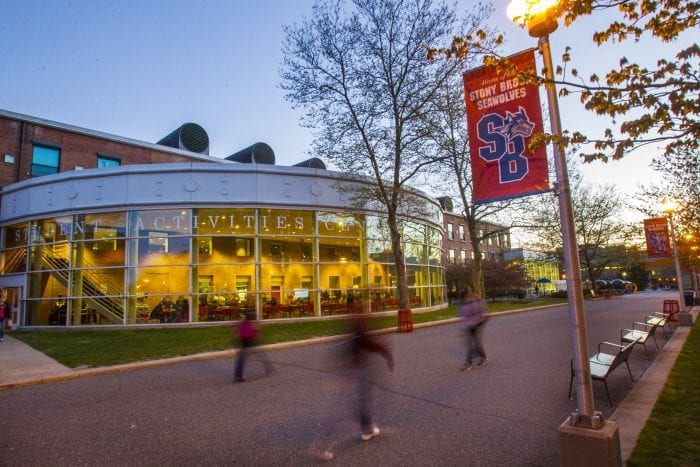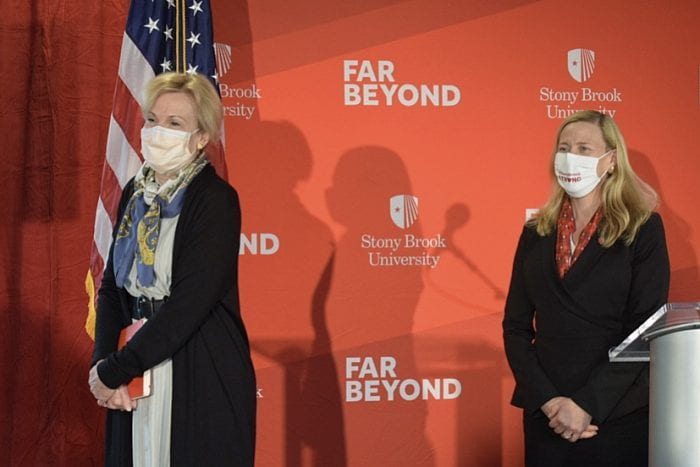In 2016, Stony Brook University rebranded itself to a new campaign called Far Beyond.
The idea behind the campaign was to highlight the wide range of programs and activities the school offered, since everyone normally acknowledges the university for its medicine, science and technology specialties.
But this year in 2020, the institution proved that it indeed has gone “far beyond” with protecting public health.
Dr. Deborah Birx, head of the White House’s coronavirus task force, visited SBU last week, a stop in a several-month-long tour of different colleges and universities across the United States. But her visit to the local university was different, and she made that clear.
During her press conference, she spoke highly of how Stony Brook has handled the COVID-19 crisis. She said from the start, it was going, well, “far beyond” what other schools, and even hospitals, were doing.
She said that back in March when the university shut down and patients with the virus were filling the rooms, Stony Brook did something different from other institutions — it actually collected data, while continuing to take care of the patients.
“I was listening to the research activities that they started from day one,” she said during the press conference. “And it thrilled my heart to hear from them that their number one thing was collecting data and collecting information in real time.”
It’s right to give credit where its due, and Stony Brook, both on the medical and campus side, has done good work in keeping the number of cases down. The university’s COVID dashboard reports just two students, one university employee and four Stony Brook Medicine employees have currently tested positive as of Oct. 11. Better yet, the school has been upfront in where those cases are located and how it is handling them.
This is compared to places like SUNY Oneonta, which had to close back in August after hundreds of students tested positive after a large super-spreader party. The Oneonta dashboard reports 712 confirmed cases among students since the start of the fall semester.
It’s also not to say that SBU has not made stumbles, especially in communicating with students.
Right off the bat during the start of the pandemic, students were rightfully upset at how the university handled the virus. In March, dorming students were shocked when each received an email saying they needed to move out, go home or find shelter elsewhere because the campus was officially closed.
Students said they felt rushed, and felt the university wasn’t being truthful or transparent with everything being so abrupt. Some international students couldn’t even go home since their countries were in lockdown.
But the students are back, and cases remain low. Is it because of the incentives the university has taken with social distancing guidelines, removing of sports and recreational activities, hybrid learning and sanitizing stations? Or is it just because Stony Brook is not a “party school” and the students there really don’t congregate as at some of the schools upstate, like Oneonta. It’s also important to note the number of students living on campus has fallen from 39% in 2019 to 17% this fall.
With a new president installed at SBU, Maurie McInnis, we think that communication with students has improved. Every person, every institution has been impacted by the pandemic. The students, who feel they are paying a lot for what at times must feel like a mostly online education, need that person-on-person interaction to let their voices be heard, even if it’s behind a clear plastic barrier.
Nonetheless, Stony Brook gets high praise from both us and those involved in the national response to COVID-19, as well as Birx, for going “far beyond.” We kindly ask that the university keeps it up, for the sake of both your students and the wider community.






